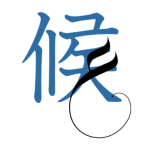This semester in the Intro to CAT class at the Middlebury Institute of International Studies at Monterey (MIIS), we looked in depth at SDL Trados Studio as our primary CAT tool. We also looked at memoQ and Wordfast, and experimented with other tools like Google Translator Toolkit, Smartcat, and Felix. Working in this sequence made everything easy for us when we learned how to use another popular CAT tool, Memsource, on our own. I also believe that after working for some time with Trados and having some experience with other tools, that we gained the necessary skills to easily transition to any other CAT tool when necessary.
We also gained a lot of insight during the course of the semester into different topics on translation technology, machine translation, controlled language, technology for interpreters, and other technical topics.
Final Project

Photo credit: Wikipedia
For our final project for this class, we were required to simulate an actual translation project, and to implement the concepts and tools we learned during the semester. My team and I created a hypothetical company which consisted of 6 translators; 5 English<>Chinese translators, and one Arabic<>English translator, and that would be me! Our hypothetical client wanted us to translate the website content of Nintendo’s Pokemon Let’s Go, Pikachu! and Let’s Go, Eevee! We had 6 files to translate with a total word count of 4189 words. We used Trados to carry on word count analysis, project quote, and deliverables. We held a kick-off meeting with our client where we discussed the specifications of the project, timeline and phases.

Company Logo
We were also required to develop a Statement of Work (SOW). We looked at a couple of SOWs examples, but the one that we found most helpful was an ATA job contract sample.
Download the project SOW here.
Project Deliverables
- Seven source files in an editable Microsoft Office Word Document file format;
- Seven pseudo-translated files;
- Six fully translated and formatted files into Simplified Chinese in Microsoft Office Word Document file format;
- One fully translated and formatted file into Arabic in Microsoft Office Word Document file format;
- Translation memories (TMX) and up-to-date product glossaries (TBX) in Simplified Chinese and Arabic.
Download project deliverables here.
Lessons Learned
All issues we ran into working on this project would go back to one problem: not creating project packages. Trying to consolidate our files at the end was not an easy task. We spent a lot of time on assembling all TBs into a single file. We also ran into several technical problems with merging the TMs. Creating project packages early on not only would have ensured efficiency and consistency, but also would have saved us from overwriting the original files for instance.

